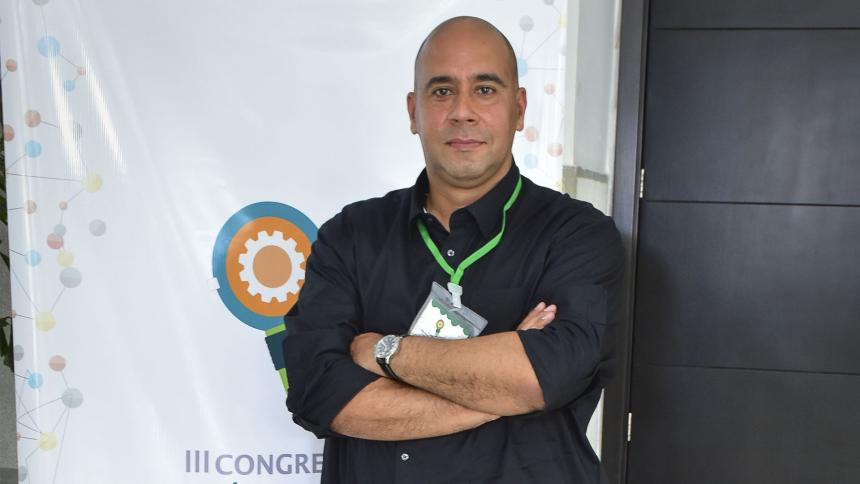Homemade wind turbine in Caño Dulce: a model of self-sufficiency
- Javier Trespalacios

- Jan 12, 2014
- 3 min read
Updated: Aug 7
While traveling to the beaches of Caño Dulce (Atlántico, Colombia), I stumbled upon something unexpected: a small kiosk in the middle of nowhere selling cold drinks. As I approached, I noticed the owners watching television—a surprising sight in an area devoid of nearby power lines. Intrigued, I asked about their energy source. A man with a welcoming expression invited me to follow him and, behind his house, revealed his invention: a homemade wind generator [1].
Homemade wind turbine in Caño Dulce (Photo: Javier Trespalacios)
The system consisted of a recycled fan motor, three blades crafted from rigid plastic and gutta-percha, and a 6-meter wooden mast assembled from joined pieces and buried in the ground. Several support cables stabilized the structure, while an electrical wire carried the generated energy to a battery inside the home, powering a lightbulb, a refrigerator, a television, and a phone charger. Driven by the constant Caribbean Sea winds, this prototype demonstrated that even modest technical solutions—though not eliminating all challenges for communities without electricity—can significantly improve quality of life and reduce energy disparities in remote areas.
Colombia’s energy context (2012)
Colombia faces significant challenges in its energy mix, with 70% reliance on hydropower (per UPME) and growing demand in non-interconnected zones (ZNI). Despite an estimated wind energy potential of 21 GW (IDEAM Wind Atlas, 2013), less than 0.1% is utilized. The lack of policies supporting small-scale renewable energy has hindered projects like Caño Dulce’s, which depend on community or academic initiatives (UPME, Energy Expansion Plan 2010-2025).
Converting a fan motor into a wind generator
Building a functional homemade wind turbine is possible using a recycled fan motor [2]. By reversing its operation—so that blades (made of rigid plastic, PVC, or recycled bottles) spin via wind instead of consuming electricity—the motor generates current. For a detailed guide, watch this tutorial:
How to build a homemade wind turbine (https://www.youtube.com/watch?v=ua8cjCJ1Y70&feature=youtu.be)
Conclusion: A significant legacy
Years later, I returned to the site and found that the electrical grid had finally arrived. Under the pretext of buying a soda, I inquired about the engineer who had created the homemade wind turbine that had amazed me. The answer was sad: the wind turbine no longer existed, and the man had passed away. However, this initiative awakened in me a deep love for wind energy and the conviction that local, simple solutions—even if they do not fully solve the energy problems in isolated areas—can significantly improve the quality of life of a person or community.
"That turbine, as ephemeral as the wind that set it in motion, taught me that innovation doesn't have to be grand to be meaningful"... JT
*****
Notes
[1] A small wind turbine, micro wind generator, or wind generator is a small-scale electrical production system that harnesses the energy of the wind. Unlike large wind farms, small wind turbines are designed for self-consumption in homes, small businesses, or rural communities.
[2] To convert a conventional fan motor (using alternating current, AC) into a wind generator, you must perform two technical modifications: 1. add permanent magnets to the rotor, since these motors are not equipped with them and they are essential for generating electricity when rotating; and 2. install a rectifier circuit that transforms the produced alternating current (AC) into direct current (DC), necessary for storing energy in batteries.
Bibliographic References
IDEAM (2013). Wind and Wind Energy Atlas of Colombia. https://www1.upme.gov.co/AtlasViento/Atlas.html
UPME (2012). Energy Expansion Plan 2010-2025. https://www1.upme.gov.co





Comments